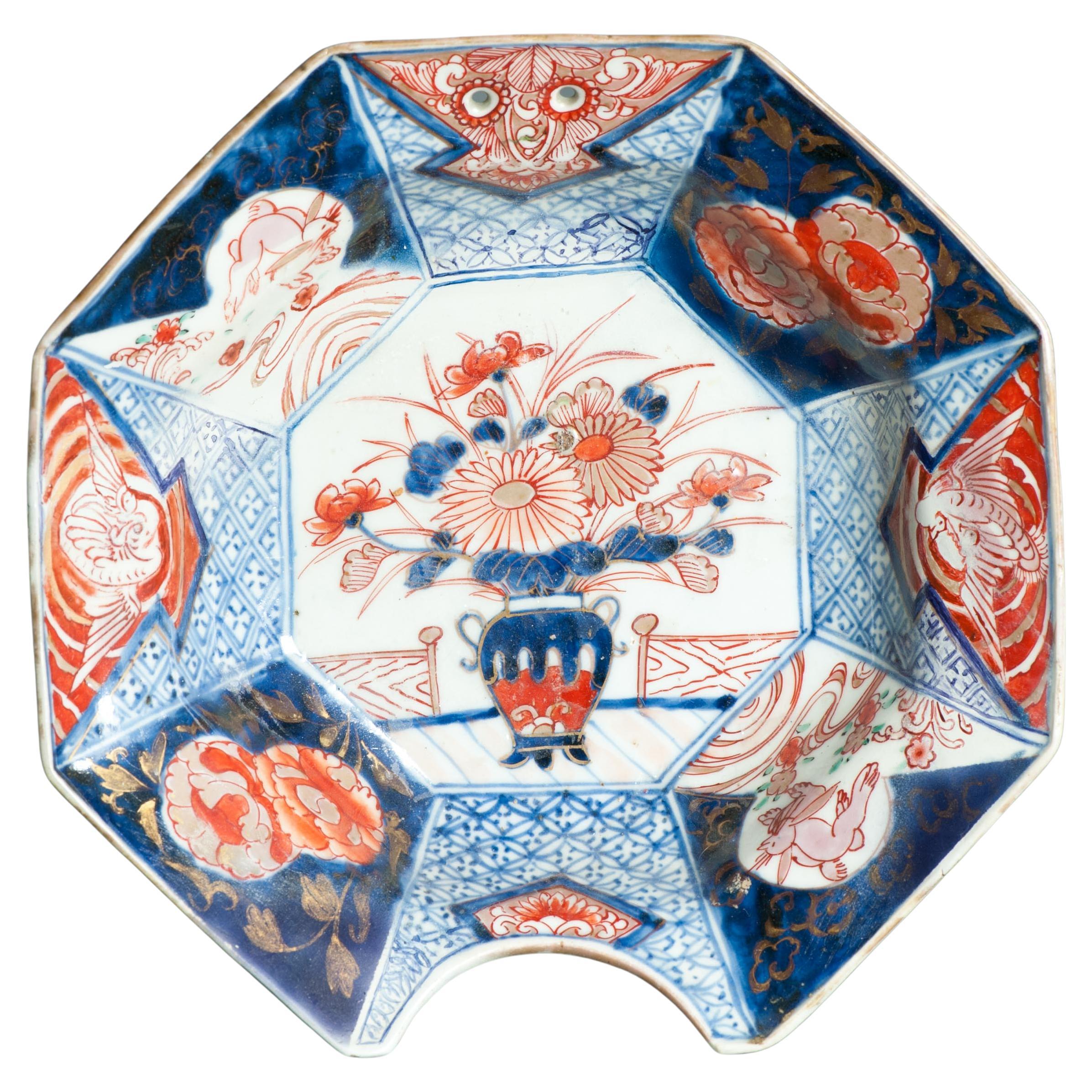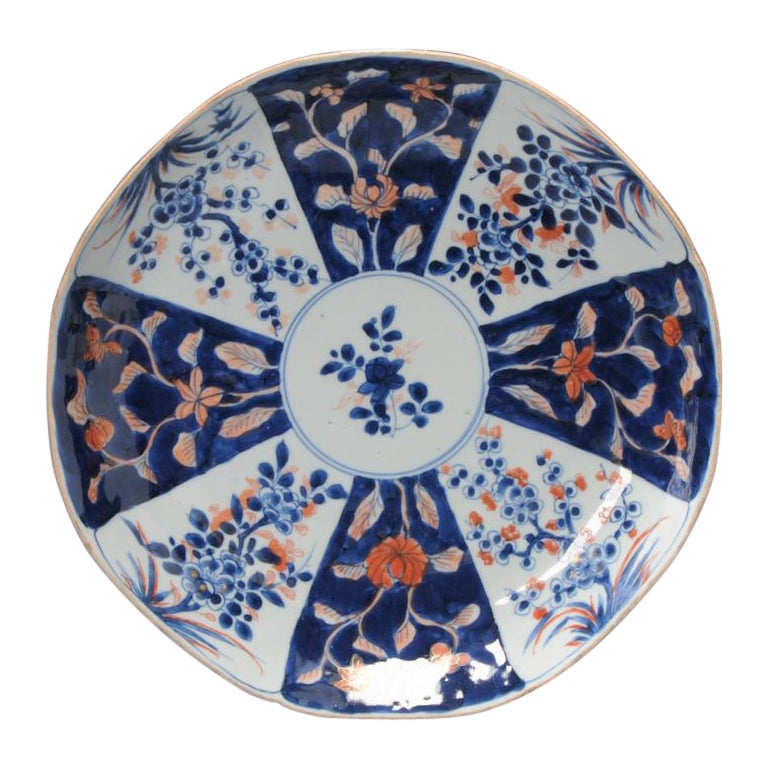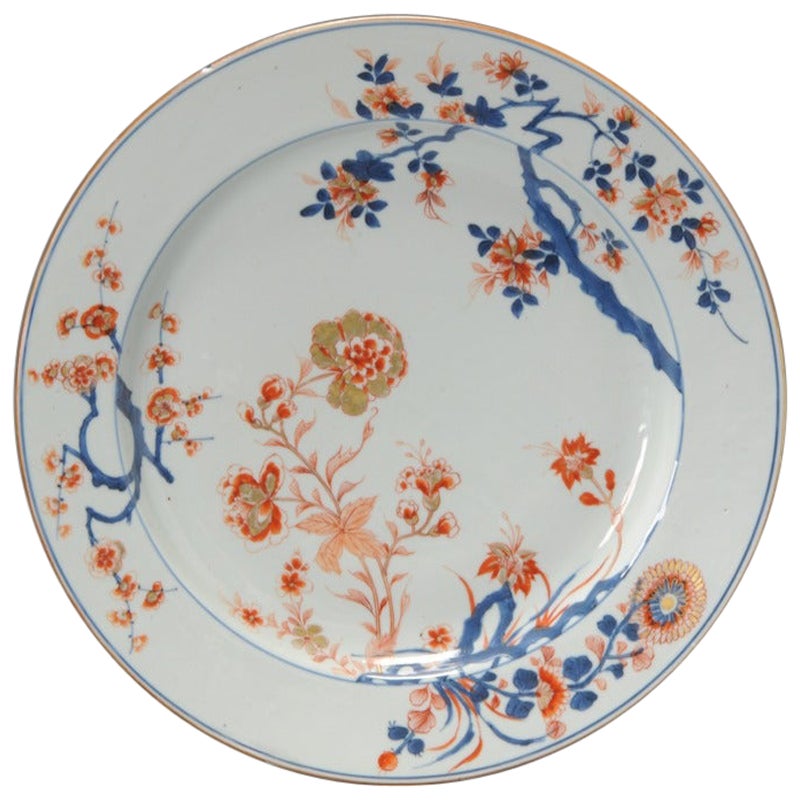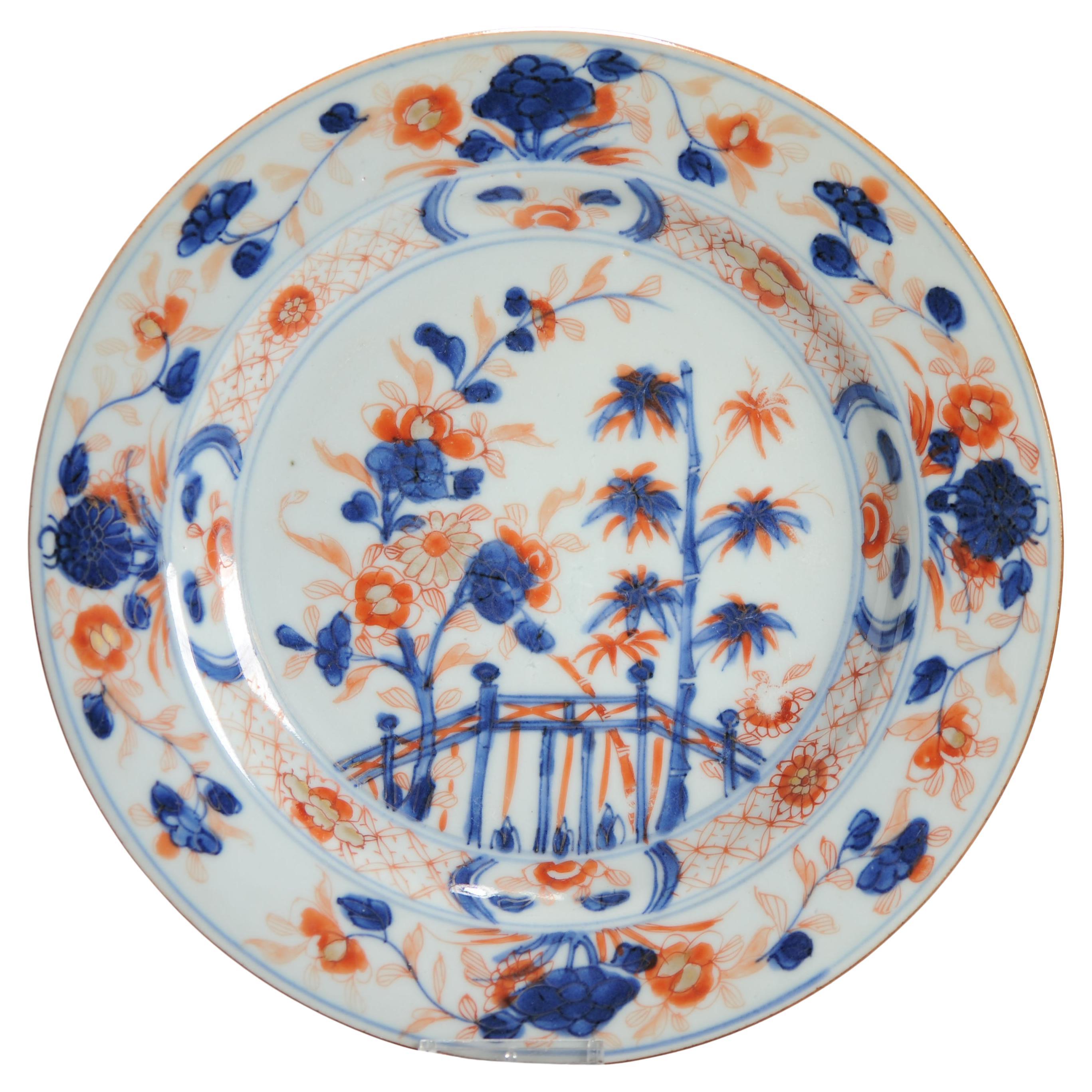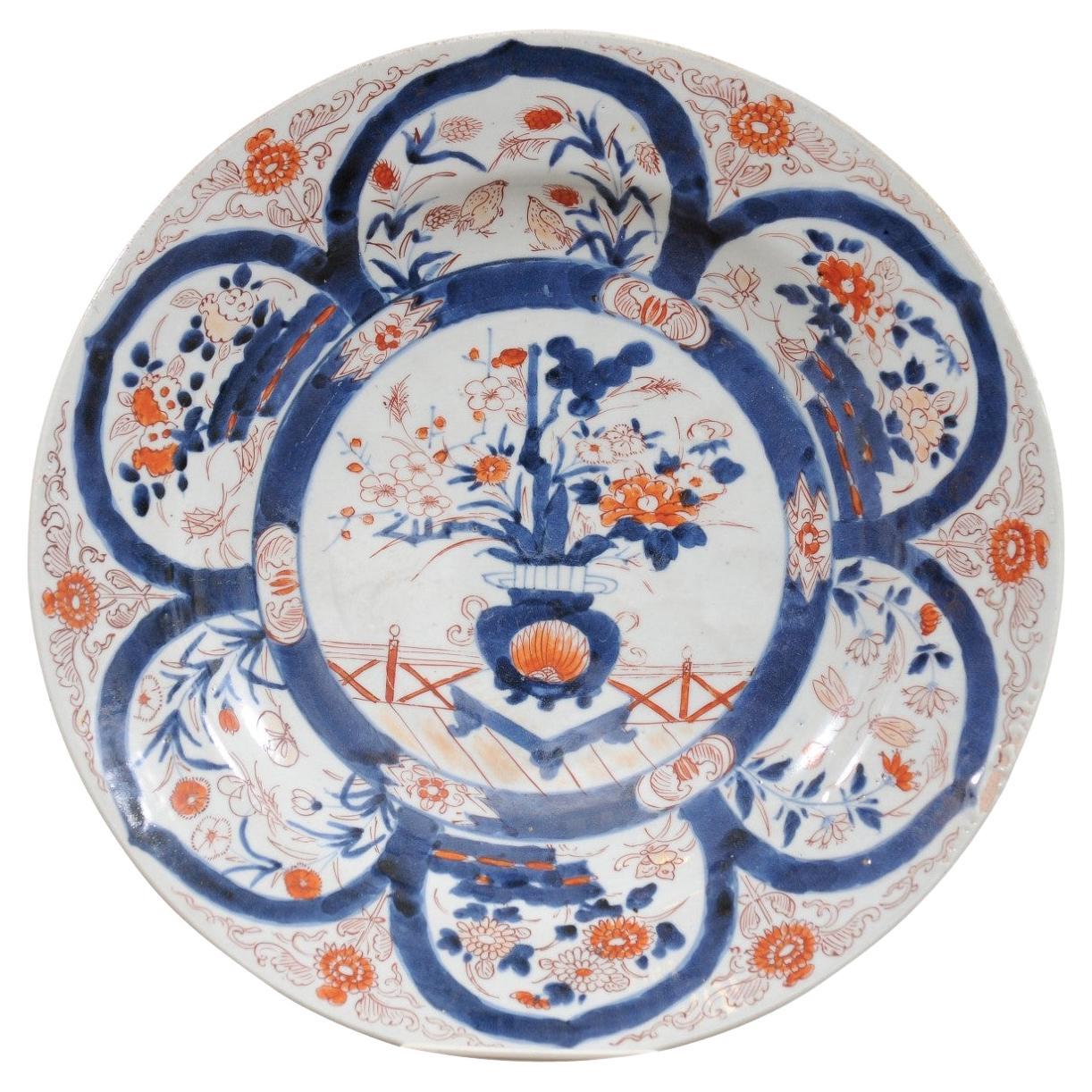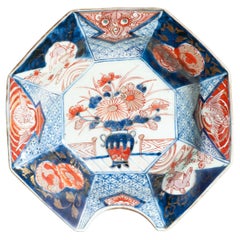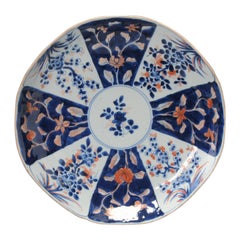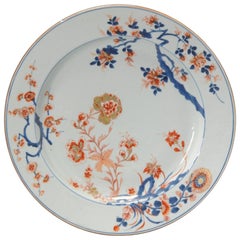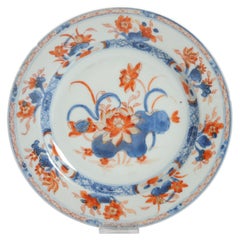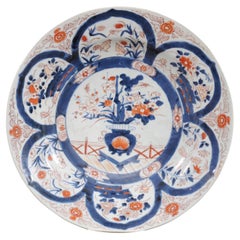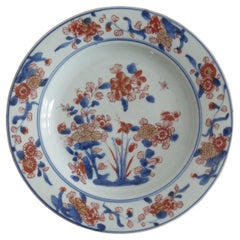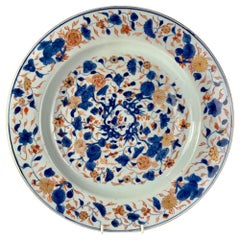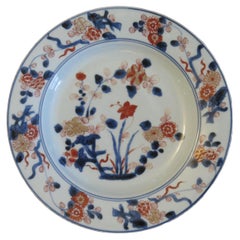Items Similar to Antique 18th c Kangxi Imari Barber Surgeon Basin Ca 1710 China Porcelain Chinese
Want more images or videos?
Request additional images or videos from the seller
1 of 16
Antique 18th c Kangxi Imari Barber Surgeon Basin Ca 1710 China Porcelain Chinese
$2,140.70
£1,621.63
€1,838
CA$2,965.66
A$3,326.18
CHF 1,741.87
MX$40,416.34
NOK 22,118.82
SEK 20,970.20
DKK 13,994.10
About the Item
Important Nobility Barber Surgeon Basin for Bleeding & shaving much more Chinese export porcelain, Imari, Kangxi period (ca 1710), with a very rich flower decoration. A barber in the 16th -19th century is not what we now call a barber but much more.
From Haircuts to Bloodletting
From the Middle Ages onwards, one would visit the barber not only for a haircut or beard trim. If you needed a tooth pulled or a bloodletting performed, you could also go to him. He also worked as a surgeon. During a bloodletting, the barber-surgeon would make an incision in the skin using a tool called a lancet and collect the blood in the basin. It was believed that this would balance the body's humors (blood, phlegm, black bile, and yellow bile). An imbalance of these humors was thought to cause diseases if one of them was too abundant.
The Barber Surgeon
Imagine your monthly beauty routine. Perhaps you go to the salon and get a manicure and
pedicure, or to the hairstylist for a cut and dye. Every six months you go to a dentist to have
your teeth cleaned and examined, and to the doctor once a year for your physical exam.
Three hundred years ago, your routine would have been much the same, except for one
thing. It would all have been done at the barbershop.
Barbers in the modern period are known to do mainly one thing: cut hair. For much of the
last hundred and fifty years, their red and white striped barber poles signified their ability to
produce a good clean shave and a quick trim. This was not always the case, however.
Up until the 19th century barbers were generally referred to as barber-surgeons, and they
were called upon to perform a wide variety of tasks. They treated and extracted teeth,
branded slaves, created ritual tattoos or scars, cut out gallstones and hangnails, set
fractures, gave enemas, and lanced abscesses. Whereas physicians of their age examined
urine or studied the stars to determine a patient’s diagnosis, barber-surgeons experienced
their patients up close and personal. Many patients would go to their local barber for semiannual bloodletting, much like you take your car in for a periodic oil change.
Barbers through the Ages
Beginning in the Egyptian era, throughout Roman times and in the Middle Ages, barbers
were known to perform much more than simple haircuts and efforts of vanity. They were
called on to perform minor surgical operations, pull teeth, and embalm the dead. Their many
duties made them the surgeons of the day.
The barbering occupation began in ancient Egypt, where both men and women shaved their
heads and wore wigs, and higher-ranking officials often shaved their entire bodies. Egypt’s
wealthy citizens and royalty were often tended to by personal slaves, who dressed their
wigs, cleaned, and shaved their bodies. Gradually a working class of independent barbers
developed, who would perform these duties for all members of society. Personal barbers
would also perform additional duties, such as cleaning ears and examining teeth.
The Greeks, in their heyday, wore long hair and curled beards, which required much tending.
Alexander the Great, fearing that enemies would use long hair as handles in battle,
encouraged his men to cut their hair and shave their beards, which required a skilled set of
haircutters. These expert Greek barbers spread along with the widening influence of the
Greek state, eventually entering Roman territory, where they set up stalls in the city streets.
Many settled communities around the world also employed a set of skilled barber-surgeons.
Cortez encountered barbers upon entering Tenochtitlan; European colonists relied on the
surgical abilities of the newfound Indian populations in American colonies; and Chinese
traveling barbers wandered through the streets, ringing a bell to announce their presence.
Because barbers employed an array of sharp metal tools, and they were more affordable
than the local physician, they were often called upon to perform a wide range of surgical
tasks.
Barbers differed greatly from the medicine man or shaman, who used magic or religion to
heal their patients. Surgery was considered a “lesser art,” and was not to be performed by
the magical preist-physicians that ruled the mystical connection between the soul and the
body. But this did not diminish their presence or usefulness.
In the ancient Mayan civilization, they were called upon to create ritual tattoos and scars.
The ancient Chinese used them to castrate eunuchs. They gelded animals and assisted
midwives, and performed circumcisions. Their accessibility and skill with precise instruments
often made them the obvious choice for surgical procedures.
Barbers, who had once performed an entire plethora of surgical procedures, were now
primarily responsible for the care of a patron’s hair and nails. Increasingly in the 17th and
18th centuries, barbers became wigmakers for the European elite, some of them eventually
splitting off into their own specialty as hairdressers.
Even so, the barber-surgeons skills remained in high demand as late as 1727, when John Gay
penned his poem, The Goat Without a Beard:
His pole, with pewter basins hung,
Black, rotten teeth in order strung,
Rang’d cups that in the window stood,
Lin’d with red rags, to look like blood,
Did well his threefold trade explain,
Who shav’d, drew teeth, and breath’d a vein.
It is hard to imagine going to the barber shop today to get a boil lanced or a tooth pulled, or
for an occasional bloodletting, but for much of human history this was the case. As medicine,
and surgery, advanced, so did the profession of barbery. From haircuts to hangnails, they did
it all.
The barber shop was the common ancestor of many different occupations today; surgeons,
dentists, tattooists, embalmers, doctors, hairdressers, wigmakers, manicurists, pedicurists,
and more can all source their ancestry to that one common denominator: the barbersurgeon.
Condition
Some minimal rimfritting only. And holes for hanging in the base rim. Size: 26.7x6.3CM Diameterxheight
Period
18th century Qing (1661 - 1912)
- Dimensions:Height: 2.49 in (6.3 cm)Diameter: 10.52 in (26.7 cm)
- Style:Qing (Of the Period)
- Materials and Techniques:
- Place of Origin:
- Period:
- Date of Manufacture:1690
- Condition:Minor losses.
- Seller Location:Amsterdam, NL
- Reference Number:Seller: 1320000896561stDibs: LU4863245085432
About the Seller
5.0
Platinum Seller
Premium sellers with a 4.7+ rating and 24-hour response times
Established in 2015
1stDibs seller since 2019
264 sales on 1stDibs
Typical response time: 2 hours
- ShippingRetrieving quote...Shipping from: Amsterdam, Netherlands
- Return Policy
Authenticity Guarantee
In the unlikely event there’s an issue with an item’s authenticity, contact us within 1 year for a full refund. DetailsMoney-Back Guarantee
If your item is not as described, is damaged in transit, or does not arrive, contact us within 7 days for a full refund. Details24-Hour Cancellation
You have a 24-hour grace period in which to reconsider your purchase, with no questions asked.Vetted Professional Sellers
Our world-class sellers must adhere to strict standards for service and quality, maintaining the integrity of our listings.Price-Match Guarantee
If you find that a seller listed the same item for a lower price elsewhere, we’ll match it.Trusted Global Delivery
Our best-in-class carrier network provides specialized shipping options worldwide, including custom delivery.More From This Seller
View AllAntique 18th c Kangxi Imari Barber Surgeon Basin Ca 1710 Japan Porcelain Chinese
Located in Amsterdam, Noord Holland
An Imari Porcelain Barber's Bowl/Basin, used for shaving, bleeding and much more.
Late 17th or early 18th century,
Painted with central flowers, hares and Birds.
Size: 25.8x6.5cm dia...
Category
Antique 17th Century Chinese Qing Ceramics
Materials
Porcelain
Beautiful Antique Chinese Porcelain Kangxi Period Imari Charger, 18th Century
Located in Amsterdam, Noord Holland
A wonderfull and high quality painted imari Charger with richly decorated scene.
The base border is very nicely decorated.
Additional information:
Material: Porcelain & Pottery
Reg...
Category
Antique 18th Century Chinese Decorative Dishes and Vide-Poche
Materials
Porcelain
$2,310 Sale Price
20% Off
A Beautiful Chinese Porcelain Kangxi Period Imari Charger China Antique
Located in Amsterdam, Noord Holland
A wonderfull and high quality painted imari Charger with richly decorated scene.
Additional information:
Material: Porcelain & Pottery
Region of Origin: China
Emperor: Kangxi (1661-...
Category
Antique 18th Century Chinese Decorative Dishes and Vide-Poche
Materials
Porcelain
$1,510 Sale Price
20% Off
Antique 18th century Antique Kangxi Yongzheng Chinese Porcelain Imari Plate
Located in Amsterdam, Noord Holland
A Chinese porcelain dish from the first half of the 18th century.
Condition
4 small chips to rim and 2 or 3 fritspots. Size: 22.5CM Diameter
Period
18th century
Category
Antique 17th Century Chinese Qing Ceramics
Materials
Porcelain
Antique 18th century Antique Kangxi Yongzheng Chinese Porcelain Imari Plate
Located in Amsterdam, Noord Holland
A Chinese porcelain dish from the first half of the 18th century.
Condition
Perfect condition. Size: 22.8CM Diameter
Period
18th century
Category
Antique 17th Century Chinese Qing Ceramics
Materials
Porcelain
Antique Large Chinese Porcelain Kangxi Period Imari Flower GoldFish Plate Dish
Located in Amsterdam, Noord Holland
A wonderfull and high quality painted imari dish with unusual richly decorated scene of goldfish and various flowers.
Additional information:
Material: Porcelain & Pottery
Emperor: ...
Category
Antique 18th Century Chinese Decorative Dishes and Vide-Poche
Materials
Porcelain
$1,542 Sale Price
20% Off
You May Also Like
Large 18th Century Chinese Export Imari Porcelain Charger
Located in Atlanta, GA
Large 18th Century Chinese Export Imari Porcelain Charger
Category
Antique 18th Century Chinese Porcelain
Materials
Porcelain
Chinese Imari Porcelain Plate or Bowl Qing Kangxi Mark and period, Ca 1700
Located in Lincoln, Lincolnshire
This is a beautifully hand painted Chinese Export porcelain plate or bowl from the Qing, Kangxi period, 1662-1722, fully marked to the base with the Kangxi period Artemisia Leaf mark within a double blue ring.
The plate is of dinner plate size, finely potted with a carefully cut base rim and a lovely rich glassy, white glaze with a light blue tinge.
The plate is carefully hand painted in a free flowing style, characteristic of the period, in varying shades of a clear cobalt blue, iron red and gold. The central well is decorated in the Imari style with flowering peonies, asters and other flowers and grasses, with a small insect flying above the flowers, all within two sets of concentric blue circles. The outer rim is richly decorated with flower sprigs and leaves, all within an outer blue circle.
The base of the plate has a recognized and documented hand painted Kangxi symbol of an Artemisia Leaf, within a double blue ring. See Page 168 of "How to Identify Old Chinese Porcelain" by Willoughby Hodgson and published by Forgotten Books. A Kangxi plate...
Category
Antique Early 18th Century Chinese Chinese Export Ceramics
Materials
Porcelain
Large Antique Chinese Export Porcelain Charger Imari Style Qianlong Era Ca. 1760
Located in Katonah, NY
This large Chinese Imari porcelain charger dates to the Qianlong period of the Qing dynasty, circa 1760.
It is finely crafted with a beautiful, glossy white glaze and hand-painted in...
Category
Antique Late 18th Century Chinese Qing Porcelain
Materials
Porcelain
Chinese Imari Porcelain Plate or Bowl Qing Kangxi Mark & period, Ca 1700
Located in Lincoln, Lincolnshire
This is a beautifully hand painted Chinese Export porcelain Plate or Bowl from the Qing, Kangxi period, 1662-1722, fully marked to the base with the Kang...
Category
Antique Early 18th Century Chinese Chinese Export Ceramics
Materials
Porcelain
18th Century Japanese Porcelain Imari Barber's Bowl
Located in Downingtown, PA
18th Century Japanese Porcelain Imari Barber's Bowl,
There is a pair to this dish available separately.
This 18th-century Japanese I...
Category
Antique 18th Century Japanese Georgian Porcelain
Materials
Porcelain
18th Century Chinese Blue And White Porcelain Barber Dish, Qianlong Period
Located in Bilzen, BE
Mid 18th century blue/white barber porcelain dish from the Qianlong period
No repairs
26 x 29.5 cm
Category
Antique Mid-18th Century Chinese Chinese Export Ceramics
Materials
Porcelain
More Ways To Browse
Asian Women
Chinese Art Metal
Red Chinese Ceramics
Chinese Antiques Metal
Ancient Chinese Antique
Chinese Men
Heals Antique Furniture
Antique Chinese Cup
Asian Men
Antique Doctors
Chinese Tool
18th Century Ceramics American
Chinese Imari
Imari China
Antique 18th Century Dress
Imari 18th Century
Antique Chinese Porcelain Yellow
Antique Barber
